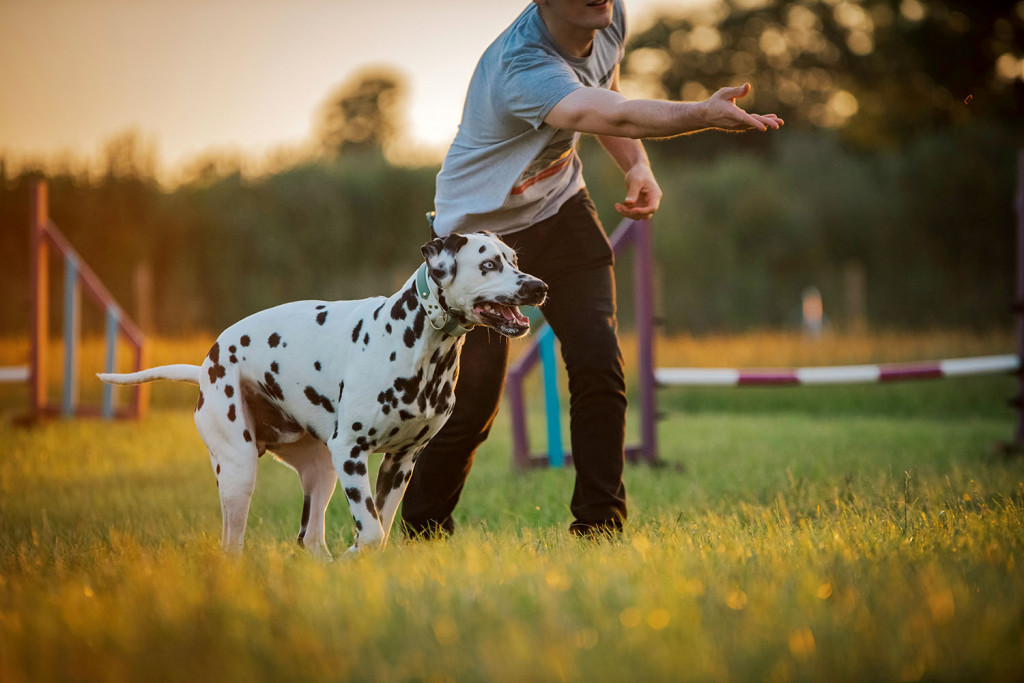What is Positive Reinforcement?

Dog training has evolved from the days of dishing out harsh punishment for bad behaviour to more humane approaches like positive reinforcement. Unlike training based upon fear, intimidation or physical punishment, positive reinforcement is a popular and effective training technique that is all about rewarding good behaviour to encourage it.
Positive reinforcement operates on the principle that dogs are more likely to learn and exhibit behaviours that result in rewards.
Why Positive Reinforcement Works
Positive reinforcement uses a fundamental principle of learning and behaviour known as operant conditioning. When a dog does something and gets a reward, it strengthens the brain’s connection to that behaviour, making it more likely to do it again. This method also boosts a dog’s confidence and makes training more enjoyable.
By creating a positive association with learning and training, dogs are more likely to feel confident, secure and eager to engage in training activities.
Positive Reinforcement in Dog Agility
Positive reinforcement plays a crucial role in dog agility training. It helps dogs learn faster and builds a stronger bond between the dog and the owner.
Enhancing Learning
Rewarding dogs for good behaviour makes training enjoyable and helps them learn skills faster. It also boosts their confidence and self-esteem, making them more eager to try new challenges.
When a dog receives praise and treats for performing well during agility training, it reinforces their belief in their abilities and encourages them to push their limits further. This confidence-building aspect is crucial in developing a well-rounded and successful agility dog.
Strengthening the Bond with Your Dog
Positive reinforcement creates a happy and cooperative relationship between dog and handler. Dogs associate training with fun and rewards, making them look forward to it. This bond extends beyond training, improving everyday interactions. You create a bond based on clear communication, trust and a deep understanding of each other’s needs and preferences.
Techniques of Positive Reinforcement
There are a few ways to use positive reinforcement in agility training:
Using Treats as Rewards
Treats are a great motivator. Small, tasty treats work best, as you can reward your dog’s desired behaviours immediately, and using small treats avoids interrupting the training session for an extended period. Choose high-quality options that your dog loves and use them sparingly to keep your dog interested.
Toys as Motivational Rewards
Toys can be fantastic motivators in dog agility training. A squeaky toy or a favourite ball can spark enthusiasm and drive. Playing fetch or tug-of-war with a beloved toy rewards your dog's efforts and keeps training fun. Dogs thrive on play, so incorporating toys into your training routine can make a world of difference.
Benefits of Positive Reinforcement
Positive reinforcement has many benefits, both in terms of improved behaviour and enhanced performance:
Better Dog Behaviour
Positive reinforcement focuses on promoting desired behaviours rather than punishing unwanted ones. As dogs learn which actions lead to rewards, they are more likely to exhibit good behaviour consistently. It also helps eliminate unwanted behaviours by redirecting their focus.
Improved Agility Performance
By associating agility obstacles or commands with rewards, dogs become more motivated to complete the tasks at hand. This increased motivation translates to improved focus, drive and overall performance, making them more successful in agility training and competitions.

Common Misconceptions
Despite its proven effectiveness, misconceptions surrounding positive reinforcement in dog agility training need addressing.
Spoiling the Dog
Some people worry that positive reinforcement will spoil their dog, leading to unruly or disobedient behaviour. This isn’t true. It teaches dogs appropriate behaviours through positive associations. Dogs learn to make choices that lead to rewards, and as owners, we set clear boundaries and standards for behaviour during training.
Overdependence on Rewards
Others think dogs will become too dependent on rewards. While dogs may start by associating actions with rewards, they learn to internalise these behaviours and rely less on treats over time.
Humane and Effective
Positive reinforcement in dog agility training is a humane and effective method. It uses treats, praise and affection to encourage good behaviour, making training enjoyable and strengthening the bond between dog and owner. Understanding and using positive reinforcement can create a rewarding training experience for you and your dog.
Photo by Wade Austin Ellis on Unsplash
Photo by Lorren & Loki on Unsplash

